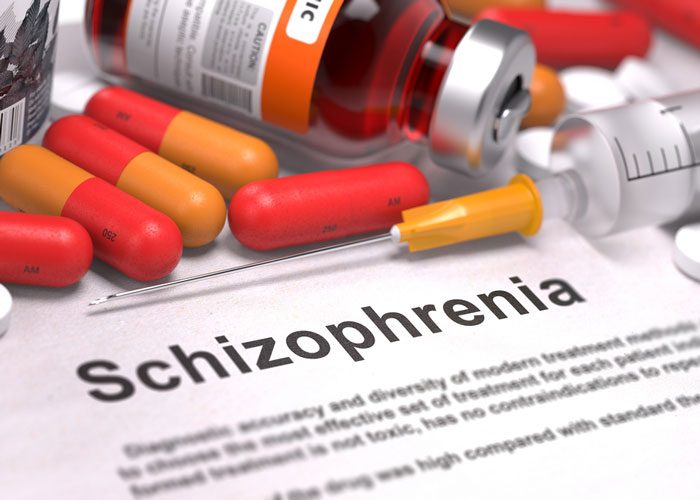


The Food and Drug Administration has approved a new drug, Cobenfy, for schizophrenia that is said to have fewer side effects than current medications. This has been a major development for patients like Tiffany who have struggled with severe side effects from traditional antipsychotic drugs. Tiffany shares her personal experience and how this new medication gives her hope for a better quality of life.
Schizophrenia: New Drug Approved by FDA Offers Hope for Patients
Background
Schizophrenia is a severe mental disorder characterized by hallucinations, delusions, disorganized thinking, and social withdrawal. Antipsychotic medications have been the mainstay of treatment for schizophrenia, but they often cause significant side effects, including movement disorders, metabolic problems, and cognitive impairment.
FDA Approves New Drug for Schizophrenia
In February 2023, the US Food and Drug Administration (FDA) approved a new medication called Cobenfy (asenapine sublingual tablet) for the treatment of schizophrenia. Cobenfy is a novel antipsychotic that is designed to have fewer side effects than traditional medications.
Trials have shown that Cobenfy is effective in reducing the symptoms of schizophrenia and improving overall functioning. Unlike other antipsychotics that are given as injections or tablets, Cobenfy is administered sublingually (under the tongue), which allows for faster absorption and a potential reduction in side effects.
Patient Perspective
For patients like Tiffany, who has struggled with severe side effects from traditional antipsychotic drugs, Cobenfy offers a beacon of hope. Tiffany has experienced significant improvement in her symptoms and quality of life since starting Cobenfy.
"It's like a weight has been lifted off my shoulders," said Tiffany. "I'm able to think more clearly, I'm more social, and I'm finally starting to feel like myself again."
Top 5 FAQs
1. What are the potential benefits of Cobenfy over other antipsychotics?
Cobenfy is designed to have fewer side effects, including movement disorders, metabolic problems, and cognitive impairment.
2. How is Cobenfy administered?
Cobenfy is administered sublingually, which means it is placed under the tongue. This allows for faster absorption and a potential reduction in side effects.
3. What are the common side effects of Cobenfy?
The most common side effects of Cobenfy include headache, nausea, vomiting, dizziness, and drowsiness.
4. Is Cobenfy approved for use in all patients with schizophrenia?
While Cobenfy is generally well-tolerated, it may not be appropriate for all patients with schizophrenia. It is important to discuss your individual needs with your healthcare provider.
5. What is the long-term outlook for patients taking Cobenfy?
Studies are ongoing to determine the long-term safety and efficacy of Cobenfy. However, the short-term results have been promising, and patients like Tiffany are hopeful for a brighter future.

As meditation gains popularity as a mental well-being tool, concerns about potential side effects have emerged. A recent study by a team of researchers from the University of Melbourne delved into the prevalence of adverse experiences among meditators in the United States. By recruiting nearly 900 adults from various meditation skill levels, the study aimed to provide more accurate estimates of how common these side effects are and what factors may contribute to experiencing them. The findings highlight the need for clearer reporting standards in future research on meditation.

Prime Minister Narendra Modi launched a groundbreaking research, development and innovation scheme that will provide a boost to the flourishing ecosystem of innovation in India. In his address at the Emerging Science, Technology and Innovation Conclave, PM Modi highlighted the crucial role of science and technology in driving transformation and emphasized on India's significant progress in the field. He also acknowledged the remarkable achievement of India's women's cricket team and expressed confidence that their success would inspire the country's youth. Attendees included renowned scientists, innovators, and distinguished guests from both India and abroad.

Indian Prime Minister Narendra Modi inaugurated the Emerging Science and Technology Innovation Conclave (ESTIC) 2025 and launched the Rs 1 lakh crore Research Development and Innovation (RDI) Scheme Fund. The scheme aims to strengthen the private sector-driven research and innovation ecosystem in the country and has a total outlay of Rs 1 lakh crore over 6 years. ESTIC 2025, gathering over 3,000 participants, focuses on 11 critical thematic areas including Artificial Intelligence, Quantum Science and Technology, and Space Technologies, providing opportunities for collaboration and reinforcing India’s science and technology ecosystem.

In this edition of Health360, a renewed debate over the alleged link between vaccines and autism is sparked by tech mogul Sridhar Vembu's endorsement of a questionable study. Despite reassurances from the medical community backed by data from the WHO, doubts continue to persist, leading to potential harm to public health. The program also delves into the alarming rise in back pain cases in India and explores new treatments.

In an effort to fight the ongoing air pollution crisis, Delhi conducted its first-ever official cloud seeding operation led by IIT Kanpur. The operation involved a small aircraft dispersing specially designed chemical flares into the atmosphere to create rain. While experts say rainfall could occur within 15 minutes to 4 hours, the actual timeframe depends on various factors such as wind direction and moisture content. If successful, the government plans to continue the operation in the coming days.

In the quest for stronger, luscious hair, we often overlook the importance of nurturing the roots. Fortunately, Ayurveda has long stressed the significance of this practice, which has now been backed by modern science. Studies have shown that herbs like Bhringraj and Amla can activate hair follicles, promoting new growth and delaying greying. Fenugreek, Neem, Hibiscus, and Ashwagandha are also found to be beneficial in strengthening and nourishing the scalp, resulting in thicker and healthier hair.

A college student shares her personal journey of becoming a vegetarian, despite facing challenges and health concerns. She then delves into an ethics class she took, where the concept of marginal cases were discussed. Following an article by philosophy professor Alastair Norcross, she concludes that even though individual action may seem insignificant, refusing to consume factory-farmed meat holds moral significance due to the potential to prevent immense suffering for animals.

On October 24, the global community commemorates World Polio Day to honor the legacy of Dr. Jonas Salk and the efforts of countless individuals and organizations in the fight against polio. This highly contagious and potentially deadly disease, once a widespread epidemic, is now largely preventable thanks to the development of a life-saving vaccine. India's successful eradication of polio serves as a testament to the importance of strong vaccination programs and collaborations in public health initiatives.

As winter arrives in India, so does the hazardous air pollution. Delhi NCR's AQI has already crossed the 400 mark, making it crucial to invest in air purifiers, especially after Diwali. Dyson, Qubo, HomePure, and Philips have launched high-quality air purifiers with advanced features to tackle different types of pollutants and create cleaner indoor air. With prices ranging from Rs 5,000 to Rs 1 lakh, these purifiers are a practical and timely purchase for a healthier living.

In a recent family vlog, Indian celebrity couple Shoaib Ibrahim and Dipika Kakar shared their "natural" hair care routine for their son, using a homemade mask made with rice flour, flax seeds, and coconut oil. However, experts warn that what works for adults may not be suitable for babies, whose sensitive skin and scalp could react to the ingredients. While the ingredients may improve hair texture, they do not necessarily promote hair growth. Instead, a healthy diet and good scalp care are more important in maintaining healthy hair.